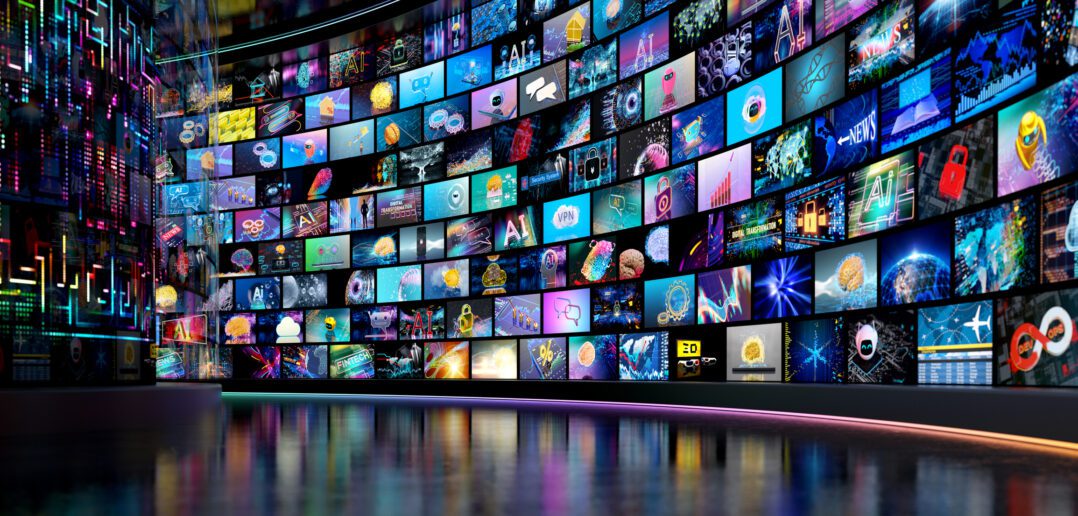As media consumers in 2025 we’re swimming in more content than the great pacific garbage patch has plastic bottles, and that’s a LOT. Gen Z and A, with their supposedly short attention spans (which aren’t short at all, it’s their interest spans that have contracted, but I digress), they drop content faster than a soggy biscuit into coffee unless it grabs them and delivers their brains enough of a jolt to stop the scroll.
Welcome to the Attention Economy – where 46% of teens are online « almost constantly » and your content gets mere seconds to prove its value.
Our eyeballs are the new gold. Netflix published almost 600 originals in 2024, Hollywood produces around 15,000 hours of movies and TV per year, whilst YouTube creators upload 500+ hours of content every minute, that’s around 20,000x more than Hollywood (credit to Doug Shapiro).
Meanwhile, TikTok averages 4% engagement while YouTube Shorts get 70 billion views per day – platform choice isn’t just strategy, it’s the difference between your content’s success and not.
Audiences scroll, skim and micro‑consume. Their primary attention – the focussed kind that we need for meaningful storytelling (and monetisation) is increasingly hard to secure. Much viewing is background noise, and what’s ironic is that the platforms on which we are tasked with doing this often go on to sell our community back to us, via a share of ad revenue. However, monetisation is a topic for another article, let’s get back to attention.
The art of capturing fleeting focus.
To snag interest in the cacophony of content requires a deep understanding your audience’s ‘need-state’. A clever combination of shorts, trending formats, vertical drama, polls, TikTok stitches – these, alongside TV series, longform, documentaries and movies are part of your attention battle strategy now. Per Forbes: Gen Z only bothers to sacrifice 1.3 seconds for an ad on average. The same goes for much of the content trying to capture the attention of young people.
However, when something genuinely catches their interest, they will dive deep – it might be a 45-minute video essay or falling into a three-hour YouTube watch marathon about the subject. Longer narratives still land. Binge culture is still alive. But you need to hook young people wherever they are, and pull every lever you can to keep their interest and attention.
It’s also vital to offer your audience agency if you’re to keep them on the hook. They want to co‑create the story, participate in YouTube live streams, take part in Roblox community events. Today our audiences aren’t just spectators – our audiences are both fans AND actors in the story.
Strategic takeaways for the Attention Economy
-
- Think in hooks – within 5 seconds especially in social video and social gaming. Know that under‑performing content dies quickly, but you must also match the moment – and whatever you do – don’t try to force the behaviour of your audience. Master platform-native formats to hold the audience within your content’s ecosystem. Remember, THEY have the power of the thumb and they will use it.
- Stay across what each platform’s priorities are – they can and often do change. Look at YouTube prioritising longer form, horizontal, 4K content now versus 12 months ago – it’s a new direction for them as consumption grows on CTVs. Successful creators with cross-platform communities monetise more effectively versus platform-dependent creators who remain vulnerable to algorithm changes.
- Build real communities, not follower counts. Have a team dedicated to conversation with audiences, talk and listen, build a relationship. Remember: we’re not just making content, we’re serving our audience.
- Be generous – reward fans for their loyalty. Polls, live chats, badges, exclusive access. Loyalty levers encourage longer sessions and higher return rates, but more importantly, they make fans feel like collaborators, not consumers.
In short, what young audiences perceive as quality, what they value, is changing. The attention economy rewards authenticity over production value, community over broadcasting, and participation over passive consumption. Those are buzzwords – but they’re also business imperatives for content makers.
An uncomfortable truth
Attention has become scarce, and time spent with media is flatlining. We’re reaching peak daily time spent with media and so the content we make, the stories we tell, now need scaffolding – from scroll-stopping, to hook, to curiosity, to binge watching and to fandom.
This changes the way we make media and means we need to adapt its distribution – because in this economy, attention isn’t offered, we have to negotiate it.




